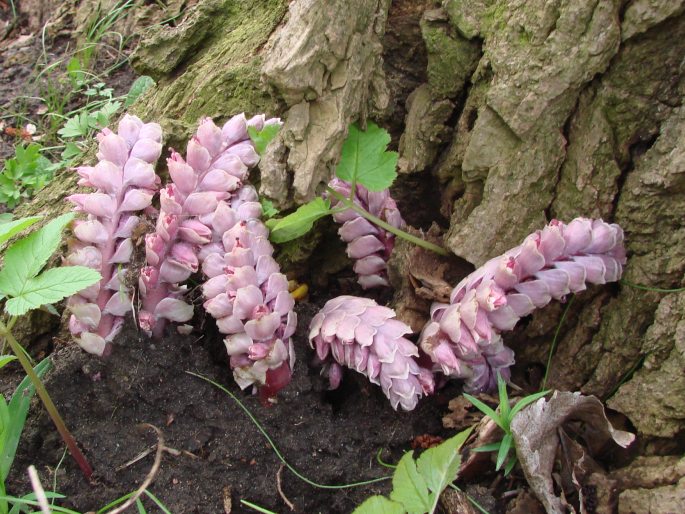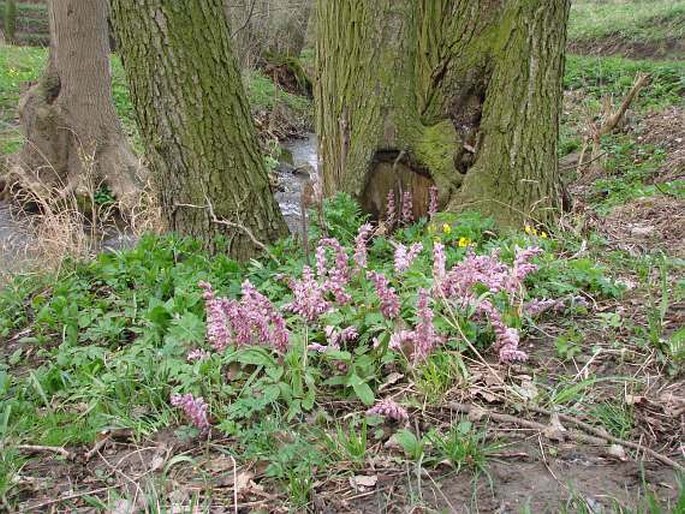Syn.: Clandestina squamaria (L.) Legrand, Squamaria orobanche Scop.
Family: Orobanchaceae Vent.

Distribution: European species, it occurs from the British Isles through southern Scandinavia and central Europe to European Russia and Caucasus, southward to the Mediterranean region (northeastern Spain, Italy and northern Greece), separately in Asia Minor and Kashmir.
Ecology: It grows in moist deciduous or mixed forests, on damp soils from lowlands to mountains. Parasitic on the roots of various trees and shrubs.
Description: Perennial herb with subterranean rhizome, wholly parasitic and without chlorophyll. Stem 15–30 cm, stout, erect, white or cream below, upper part more or less tinged with lilac-pink. Leaves scale-like, alternate, suborbicular, cordate-amplexicaul, entire, bracts similar but thinner. Flowers zygomorphic, in terminal spike-like raceme, patent or drooping, calyx campanulate, to 10 mm, glabrous to glandular-pubescent, corolla with cylindrical tube and 2-lipped limb, 14–17(–20) mm, upper lip entire, lower flat. The fruit is a capsule.
Note: The genus Lathraea contains about 5 species, which occur in Europe and Asia.






These images were taken in Czechia, Bohemia, Vůznice (by Petr Krása, April 1999), Moravia, Brno-Bystrc; Bohemia, albinos – Litoměřice (by Ladislav Hoskovec, April 8, 2004 and April 12, 2008), and Bohemia, Krkonoše (by Jindřich Houska, March 26, 2007).


